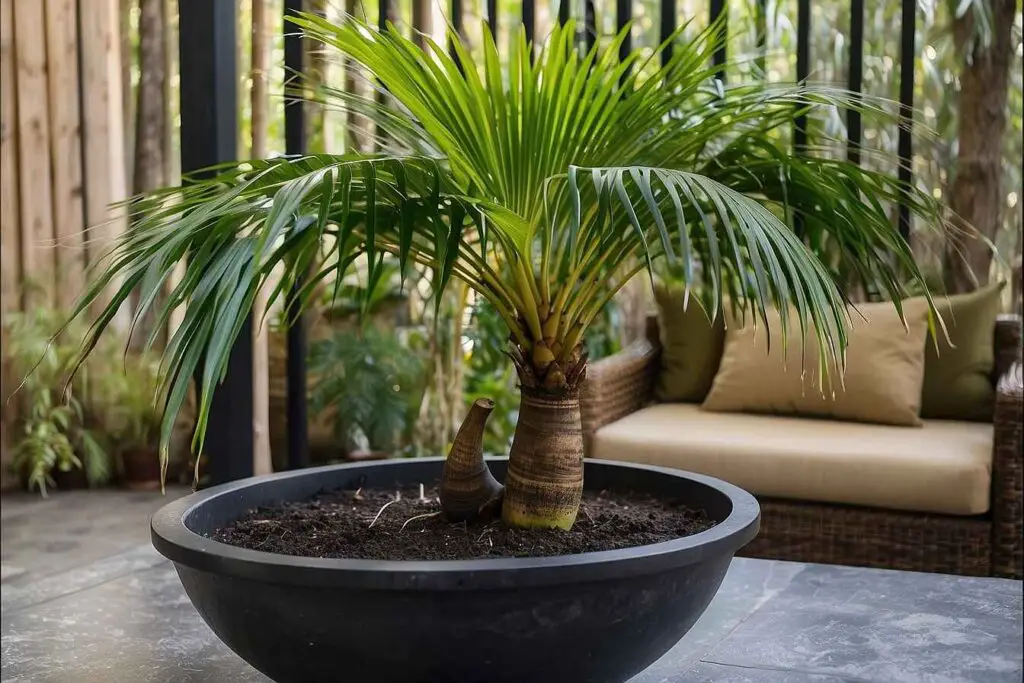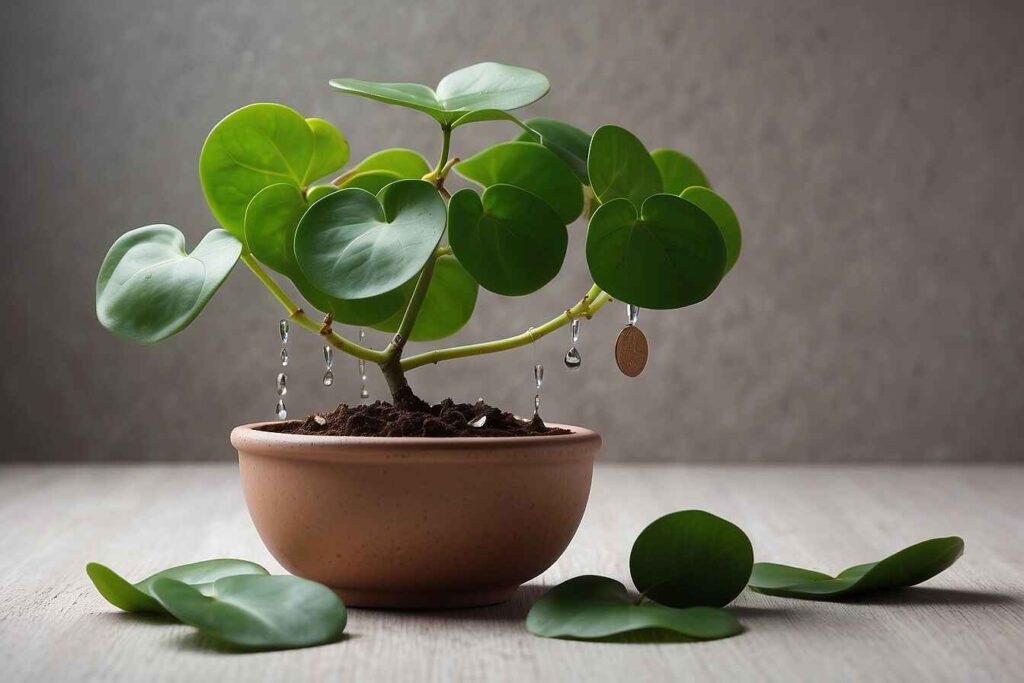The ZZ plant is a hardy houseplant from Eastern Africa. It’s known as Zamioculcas zamiifolia. People like it because it has shiny green leaves. The ZZ plant can grow well in low light and without much water. This makes it good for busy homes and offices.
The ZZ plant is toxic to cats. This means that even though the plant can make your home look nice, it also poses a big danger to your cats. It’s important to understand this risk to keep your pets safe.
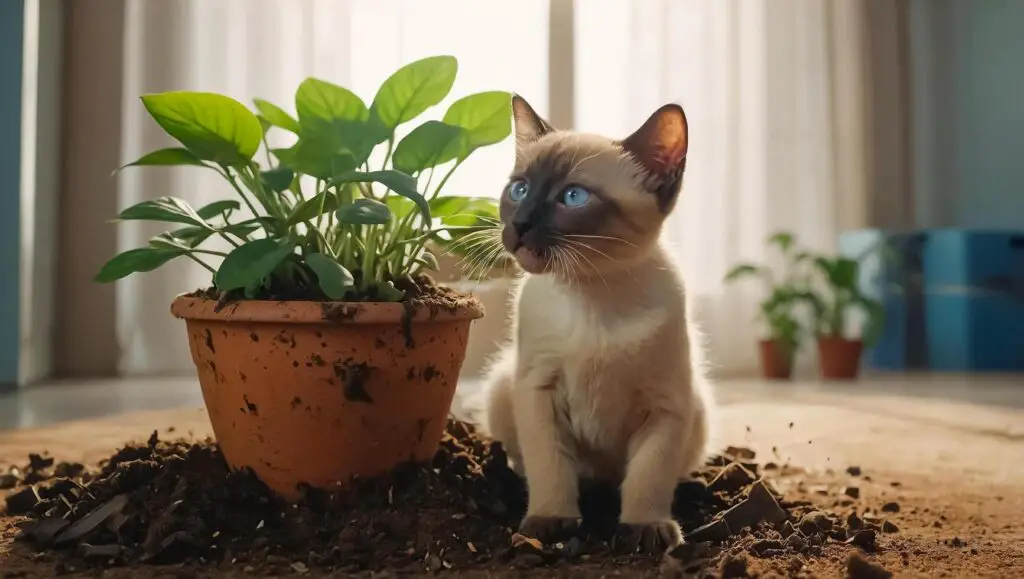
Is the ZZ Plant Toxic to Cats?
Yes, the ZZ plant is dangerous for cats. This is very important if you have or want this plant at home. The plant has crystals that can be toxic to cats.
When a cat chews on or eats parts of the ZZ plant, tiny sharp crystals can cause trouble. This can make the cat drool, throw up, have trouble swallowing, and feel pain in its mouth. It’s important to know the ZZ plant is toxic to cats. This helps prevent accidents and keeps your furry friend safe.
Symptoms of ZZ Plant Toxicity in Cats
Common Symptoms to Watch For
When a cat eats or chews on a ZZ plant, you’ll see clear signs of sickness right away. Cats who get sick from ZZ plants often show these symptoms: .
- Excessive drooling is a common symptom.
- Cats may vomit soon after eating the plant.
- There can be noticeable irritation and swelling in the mouth, lips, and tongue.
- Due to the irritation, cats might have trouble swallowing.
- Cats may paw at their mouths to ease the discomfort.
Severity of Symptoms
The symptoms caused by the ZZ plant can vary. This depends on how much of the plant the cat ate and how sensitive the cat is. Usually, the symptoms are mild to moderate. This means the cat will feel uncomfortable but will not be in serious danger. However, you must take any signs of ZZ plant toxicity in cats very seriously. Severe reactions can happen, even if they are less common. These can cause dehydration from a lot of vomiting. They can also cause swelling in the mouth and throat, which could make it hard for the cat to breathe and swallow.
Recognizing the symptoms of ZZ plant toxicity in cats is important. Taking quick action can help reduce the effects on your pet. This ensures your cat gets the care they need.
What to Do If Your Cat Eats a ZZ Plant
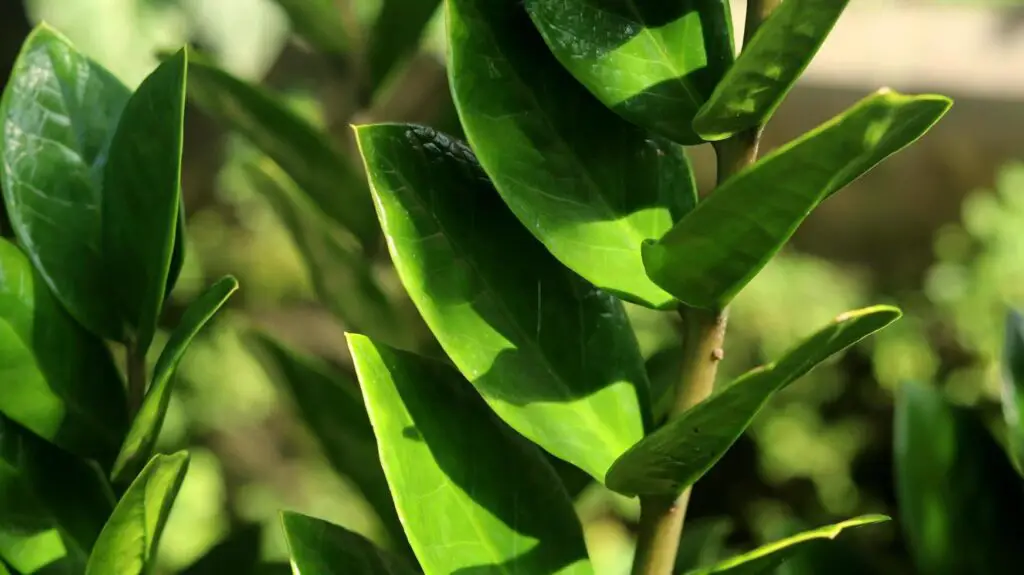
Immediate Actions to Take
If you think your cat ate part of a ZZ plant, act fast. Here are the first steps you should take:
- Remove the plant parts. Gently take out any leftover ZZ plant pieces from your cat’s mouth. This stops more from being swallowed.
- Rinse the mouth. If you can, rinse your cat’s mouth with water. This removes any leftover plant bits and helps with mouth irritation.
- Watch your cat. Keep a close eye on your cat for signs of ZZ plant poisoning. Look for drooling, vomiting, or mouth irritation.
When to Call the Vet
While early signs of ZZ plant poisoning in cats can often be handled at home, it’s important to know when to get a vet. Contact your vet right away if: .
- If your cat keeps vomiting, drooling a lot, or having trouble swallowing, even after you’ve tried to help, you should keep an eye on the symptoms. They may not be getting better.
- Seek emergency vet care if you see serious signs like: .- Swelling in the mouth or throat .- Trouble breathing .- Extreme tiredness .
- If you’re unsure about how serious your cat’s reaction is, it’s best to be careful. Consult your vet to get advice on what to do next.
Preventing ZZ Plant Toxicity in Cats
Safe Placement of ZZ Plants
To keep cats safe, make sure ZZ plants are out of their reach. Here are some tips: .
- ZZ plants should be placed on high shelves or in hanging planters that your cat can’t reach. This helps prevent your cat from chewing on the plants, reducing the risk of harm.
- If you can, keep ZZ plants in a room your cat can’t access. This special space can hold any toxic plants. This keeps your pet safe.
- Use plant cages or decorative screens around your plants. This will prevent your cat from getting too close.
Alternative Cat-Safe Plants
If you’re worried about ZZ plant risks for cats, choose plants that are safe for them. Here are some nice options that are not toxic: .
- Spider Plant (Chlorophytum comosum) is a tough plant that is easy to care for. It’s safe for cats and can help clean the air.
- Areca Palm (Dypsis lutescens) is a lovely palm. It gives your home a tropical look without danger to your pets.
- The Boston Fern (Nephrolepis exaltata) has thick, green leaves. This plant is safe for cats and grows well in areas with some shade.
- Parlor Palm (Chamaedorea elegans) is another plant safe for pets. It’s great for indoor spaces. This palm plant does well inside homes.
- Calathea (Calathea spp.) has beautiful leaf patterns. This plant is safe and makes your space look nice.
Keeping Cats Safe from ZZ Plant Toxicity
Understanding the ZZ plant is poisonous to cats is very important for pet owners. The plant has crystals that can make cats feel very sick if they eat it. Symptoms include drooling, throwing up, and mouth irritation. You should remove any plant material from the cat’s mouth and rinse it. If the symptoms are serious or don’t go away, contact a vet right away. To protect your cats, keep ZZ plants away from them and choose plants that are safe for cats.
Final Safety Tips
- Educate yourself about the plants in your home. Be aware of the risks they might pose to your pets. Know what plants are safe and which ones can be dangerous for your animals.
- Place Plants Strategically: Put ZZ plants in high places so your cat can’t reach them. You can use shelves, hanging planters, or other barriers.
- Monitor Your Cat. Keep an eye on your cat around plants. Watch for any signs of your cat eating plants or getting sick from them.
- Choose safe plants to beautify your home without risk to your cat. Good options are spider plants, areca palms, or Boston ferns. These non-toxic plants can make your home look nice while keeping your cat safe.
- Consult your vet if you think your cat ate a ZZ plant. If your cat shows signs of being sick, get veterinary help quickly.
Why ZZ Plants are Popular
ZZ plants, also known as Zamioculcas zamiifolia, have become very popular indoor plants. They come from Eastern Africa and are tough. ZZ plants can grow well in low light and don’t need much watering. This makes them great for homes and offices where people are busy.
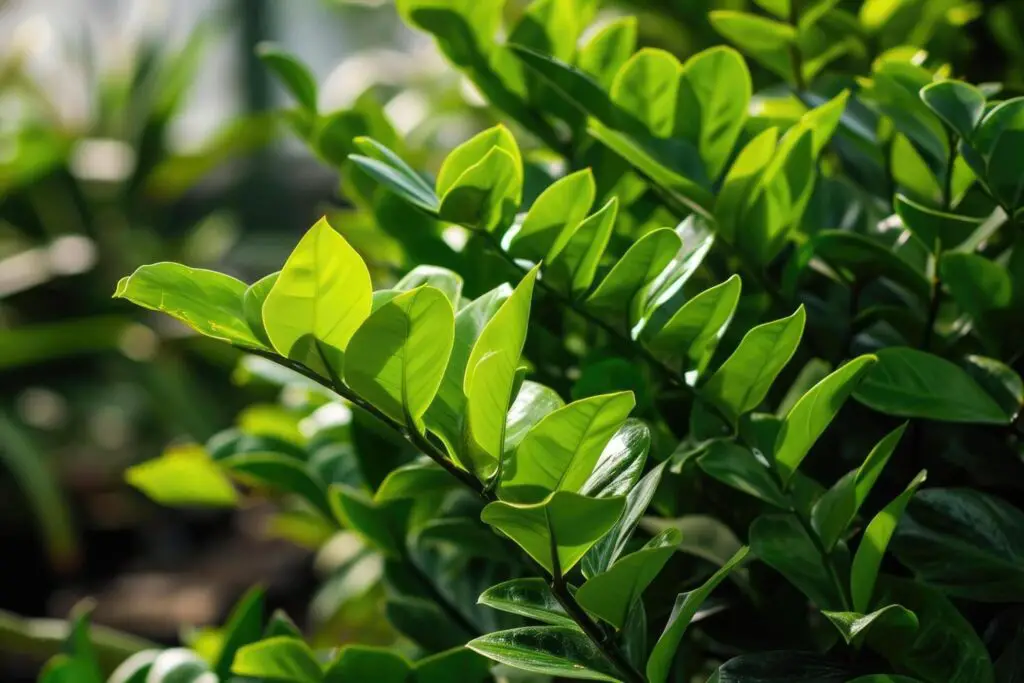
Overview of ZZ Plant Features
The ZZ plant has glossy, dark green leaves that grow up. This adds elegance to indoor spaces. The plant can purify air and survives neglect. So, plant enthusiasts like this low-maintenance plant.
Common Uses in Homes
In homes, ZZ plants are used as decorative items in different places. They are often put in living rooms, bedrooms, or offices to make the inside look better. Their small size and easy care make them good for tables, shelves, and corners with some light but not too much.
ZZ plants are nice to have, but they can be harmful to cats. They can cause problems like mouth irritation and vomiting if cats eat parts of the plant. Pet owners need to be careful and put pet safety first when enjoying ZZ plants.
ZZ Plant Toxic to Cats: What You Need to Know
In homes, ZZ plants are used as decorative items in different places. They are often put in living rooms, bedrooms, or offices to make the inside look better. Their small size and easy care make them good for tables, shelves, and corners with some light but not too much.
ZZ plants are nice to have, but they can be harmful to cats. They can cause problems like mouth irritation and vomiting if cats eat parts of the plant. Pet owners need to be careful and put pet safety first when enjoying ZZ plants.
Emergency Steps for ZZ Plant Exposure
If you think your cat got into a ZZ plant, take these steps right away: .
- Take out the plant. Carefully remove any ZZ plant material from your cat’s mouth. This stops your cat from swallowing more of it.
- Rinse your cat’s mouth with water if possible. This can help flush out any remaining plant material. It can also soothe irritation caused by calcium oxalate crystals.
- Monitor your cat closely for signs of toxicity. Watch for things like too much drooling, throwing up, or trouble swallowing.
- Comfort and Calm: Soothe your cat to lower stress and anxiety. This can help stop their symptoms from getting worse.
- Don’t force your cat to eat or drink right after they vomit. This could make them vomit more.
Contacting a Veterinarian
It’s important to contact your vet right away if you see signs of ZZ plant poisoning in your cat. Give the vet details like the type of plant, how much your cat ate (if you know), and when the symptoms started.
Your vet may suggest you bring your cat in for a checkup. This depends on how bad the symptoms are. The vet can then advise you on how to help your cat feel better. This includes giving medicines to relieve discomfort and watching for any other problems.
By acting quickly and getting help from a vet, you can reduce the effects of ZZ plant poisoning in cats. This gives your pet the best chance for good health and recovery.
Protecting Your Cat from ZZ Plant
Best Practices for Plant Placement
To keep your cat safe from the ZZ plant’s toxicity, follow these guidelines for where to place plants: .
- Place ZZ plants on high shelves or in hanging planters. This keeps them away from your cat. This also reduces the chance of your cat eating the plants by accident.
- Use physical barriers like plant stands or decorative screens around ZZ plants. This can prevent cats from getting to the plants.
- If possible, have a room or area just for your cat. You can keep plants that are bad for cats, like ZZ plants, in that room. This keeps your cat safe.
Other Safe Plants to Consider
Instead of ZZ plants, you could try these cat-safe plants for your indoor space:
- The spider plant is a type of houseplant. It is called the “spider plant” because of its long, trailing leaves. The spider plant is known for its ability to clean the air. It can remove harmful chemicals from the air in your home.
- Areca Palm (Dypsis lutescens) is a safe plant to have in your home. It adds a tropical feel to the space.
- Boston Fern (Nephrolepis exaltata) is a plant with full, green leaves. It is safe for cats to be around.
- Parlor Palm (Chamaedorea elegans) is a safe plant that does well inside homes.
- Calathea (Calathea spp.) is known for its colorful and patterned leaves. This makes it a safe and attractive option.
By choosing cat-safe plants and placing them right, you can make a safe, nice indoor space for your plants and cats. Check your home for dangers. When picking plants, focus on your pet’s health.
To further enhance your understanding of common plant toxic problems, don’t miss our comprehensive article on
Is Pokeweed Poisonous to Touch?
